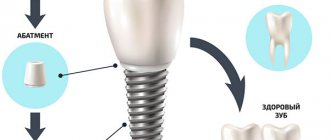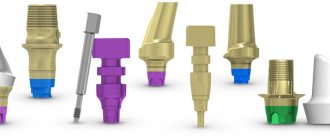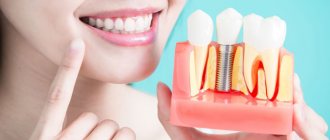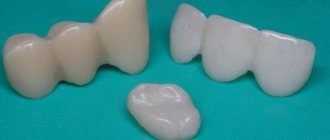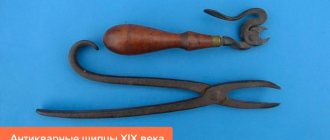- Indications
- Contraindications
- Methods
- Simple
- Complex
- Low-traumatic methods
- Broken tooth or root
- Orthodontic
- For inflammation
- Before implantation
- By tooth location
- Recommendations after removal
- Prices
- Doctors
- Reviews
Tooth extraction in dentistry occurs if therapeutic measures are ineffective. But it is worth remembering that the main task of all dentists is to preserve the tooth and removal is an extreme, forced measure.
Indications for removal
With the development of new technologies, equipment, and highly qualified doctors, there are fewer indications for tooth extraction. But still they exist and this:
- severe damage to the subgingival and coronal parts with the impossibility of saving it;
- tooth mobility grade 3-4 (with periodontitis);
- teeth with impaired patency of root canals (with periodontitis);
- enlarging cyst from 0.7 cm (could not be cured by other methods);
- incorrect placement of wisdom teeth (and others), which interferes, injures the mucous membrane, and causes discomfort;
- injured tooth (fracture, large chips);
- tumor of the jaw bones and tissues;
- difficult eruption;
- for orthodontic treatment (bite correction);
- for orthopedic treatment (installation of a prosthesis).
Dystopian tooth from 9,500 rub.
Simple from 3,500 rub.
Piezosurgery from 9,500 rub.
Complex from 9,500 rub.
Wisdom tooth removal from RUR 3,500
Tooth root removal from RUB 1,000.
Methods and types of removal
Tooth extraction in dentistry is divided into simple (using forceps), surgical (with excision of tissue and/or tooth), and recently another type has been added - atraumatic (using modern technologies).
Types of removal:
- complete
removal of the tooth along with the root; - resection
- removal of the top of the root. Usually in the presence of granulomas or cysts; - hemisection
- one root is removed, leaving the crown and other roots.
Why do you need to remove a cyst?
Patients sometimes do not want to resort to surgery, claiming that the tumor does not cause discomfort. Yes, the development of a cyst is asymptomatic. But it begins to destroy the root of the adjacent tooth, and then the surrounding tissue. And instead of timely basic surgery, you have to perform complex manipulations that threaten complications.
Another point:
If you do not remove the dental cyst while it is still forming (the cost will be determined by the attending physician), then there is a possibility of its degeneration into a malignant tumor.
Come for a consultation, and we will decide what steps you need to take specifically in your situation, whether you can save the tooth or need to remove it, we will take pictures to identify a cyst or granuloma. Fast, comfortable, pain-free.
Easy removal
A simple extraction method is performed if the crown is well preserved and there are no complications. The doctor uses forceps consisting of handles, cheeks and a lock, sometimes an elevator when the root is deep in the alveolar socket.
The method is simple and less traumatic. It can be planned - for subsequent prosthetics, tooth trauma, its looseness, for braces. It can be an emergency - the cause is caries, pulpitis, infection of tissue at the root and a condition that can be harmful to health. Extraction is carried out urgently.
Simple removal steps:
- Local anesthesia in a selected dosage
- Removing the gums and applying forceps
- Loosening. The upper incisors are rotated with rotational movements, they have a cone-shaped root, while the lower ones have a more complex root structure - they are rocked
- Extraction from the alveolar socket
The front teeth are painlessly removed and the procedure takes up to 30 minutes.
, recovery is fast.
Sometimes people wonder how many teeth can be pulled out during a visit. Usually one or two teeth are extracted in one visit. Removal of three teeth at once most often refers to children's milk teeth.
Difficult removal
The use of special tools and clear actions of the doctor are necessary if the task is complex tooth extraction without pain. The method is used when:
- the presence of several roots, the root canals are curved and touch neighboring elements;
- atypical position of the tooth, not in a row, horizontal position, under the gum or recessed into the jawbone;
- severe destruction, during manipulation the tooth may simply crumble;
- the presence of enlarging cysts, granulomas;
- the root has fused with the bone tissue.
Doctors also use surgical removal of a permanent tooth in cases where it is difficult to reach. Often these are problematic figure eights at the bottom and surgery is performed to remove a tooth in the lower jaw.
Removal steps using the complex method:
- Anesthesia. Stronger, because the operation takes longer.
- An incision in the gum with a scalpel.
- Sawing out a piece of bone or sawing a tooth into pieces.
- Extraction from the hole.
- Stitching. These can be self-absorbing or non-absorbing, at the discretion of the surgeon.
The process of removing a molar tooth using a complex surgical method can take from half an hour to two hours.
.
Low-traumatic removal methods
Science is developing rapidly, everything is being done to make a person’s life comfortable, including new atraumatic methods of tooth extraction. Less time is spent on the procedure, forceps are not used, and the result is a complex tooth extraction without pain
.
These are ultrasound, laser removal techniques, and piezosurgery. For example, ultrasound
acts on hard tissues, does not injure the gums, blood vessels and capillaries, and does not affect nerves. The device carefully and accurately separates the gum from the tooth, while at the same time, a physiological solution is supplied during the process to speed up the healing of the hole.
The ultrasound method is often used in dental clinics to extract wisdom teeth in the lower jaw. Its location and roots usually require not a simple tooth extraction by a doctor, but a surgically complex one.
The advantages of such methods:
- painlessness;
- reducing the risk of infection;
- less blood;
- preservation of gum relief.
The downside is the high cost of tooth extraction both in Moscow and in the regions. But when it comes to the health of yourself and your loved ones, the price of tooth extraction in a clinic is not the most important factor.
Let's look at the extraction features of some cases.
Removal of broken tooth and root
A broken tooth with a chip, crack, or severely damaged tooth with a damaged root must be removed.
After the anesthesia begins to take effect, the doctor, using forceps, moves the gum back and pries out the remains of the root. Then he removes it from the hole. Sometimes an elevator is required to loosen the remains of the tooth and break the bonds holding it in the bone.
If root fragments are detected visually or on x-ray, a surgical procedure is required. An incision is made in the soft tissues of the gum until the root is exposed, and the dental surgeon completely removes the fragments.
If a wisdom tooth is broken in a difficult situation, after cutting the gum, part of the bone is sawed out, and the root and fragments are removed. Stitches are applied. The operation to remove a tooth on the lower jaw is more difficult
due to the bone structure and roots underneath.
Possible complications after tooth extraction
Complications can appear during surgery, as well as after it, and can be local or general. General: fainting, rarely – shock. Their cause is the patient’s psycho-emotional stress, sometimes pain due to poor-quality anesthesia.
Local complications:
- Fracture of the tooth being removed (crown or root);
- Dislocation or fracture of a nearby tooth;
- Trauma to the soft tissues of the oral cavity;
- Dislocation or fracture of the jaw;
- Perforation of the bottom of the paranasal sinus;
- Pushing the tooth root into the maxillary sinus;
- Bleeding;
- Alveolitis.
Orthodontic removal
Removal for orthodontic reasons is associated with further work to change the malocclusion and install crowns. To do this, sometimes you have to remove healthy elements.
If there is not enough space for the teeth, they grow incorrectly, the doctor may decide to remove several teeth at once. More often these are the fourth or fifth teeth. Extraction of the sixth tooth is done extremely rarely; in this case, the “fulcrum” is lost, which can affect the effectiveness of the entire treatment. Without these two teeth, there will be a space that will allow the crookedness to be corrected.
Elements are removed in case of malocclusion, when the lower jaw protrudes above the upper jaw or vice versa. Also with asymmetry of the dentition.
Is it worth getting an implant?
The absence of the sixth tooth threatens:
- displacement of neighboring units;
- advancement of antagonists on the opposite jaw.
Neighboring and antagonist teeth will slowly shift, which threatens to expose the roots, the appearance of wedge-shaped defects at the gum itself, exposure of the neck, which is sensitive to changes in temperature of water and food, and pain. In addition, there will be a change in the bite, since the teeth will be out of place. Therefore, it is necessary to place an implant to maintain healthy teeth and correct bite.
Features of tooth extraction with a cyst, flux, inflammation
If a cyst is discovered on a tooth, which could not be cured therapeutically or is already in an advanced state, a radical solution remains. Extraction.
Cyst
- a benign neoplasm, is a vesicle with liquid or pus. The infectious disease affects the jaw bone tissue and/or the root of a tooth inflamed by bacteria.
Dentists try to preserve the tooth, not remove the damaged one completely, and use the following methods:
- cystotomy
(removal of the anterior membrane of the cyst, leaving the other membranes); - hemisection
(removal of the root with the cyst); - cystectomy
(removal of all membranes containing the cyst: soft and hard).
Tooth extraction during flux occurs with a stronger anesthetic according to the following scenario: the periosteum is incised, the pus is cleaned out, damaged tissue and the “bad” tooth are removed in whole or in parts, and drainage is installed.
Alternatives
An alternative method for restoring sixes is a bridge prosthesis. This is a structure consisting of crowns tightly connected to each other. To restore one tooth, the bridge consists of 3 crowns. The two outer ones are fixed on the teeth on both sides of the defect. The supporting teeth are ground down to form the internal cavity of the outer crowns of the prosthesis. The middle crown is hinged and imitates the lost six.
This option is cheaper than implantation, but has disadvantages - grinding the enamel of living teeth leads to a reduction in their service life. Another important point is that the bone under the hinged crown does not receive stress during chewing, so bone tissue atrophy is inevitable.
Features of tooth extraction before implantation
If a dental implant is to be placed in the future, after extraction, which is therefore made as atraumatic as possible, bone material and a membrane are placed on the hole and sutured. After restoration, the site will be perfect for an implant; no bone grafting will be required. There is a technology for installing an implant immediately after tooth extraction - immediate implantation. Everything is discussed with the implantologist in advance.
Do not remove teeth in advance; first you need to make an appointment with a specialist and get a consultation and an action plan. Or you can incur the additional cost of bone grafting yourself before implantation. And installation of implants definitely cannot be done inexpensively.
Guarantees
In our Center, implants are installed with a lifetime warranty from the manufacturer - Nobel Biocare. We provide guarantees:
- lifetime for the installation of implants;
- 1 year for crowns.
The warranty program includes a complex for the implant, surgery, bone reconstruction and prosthetics.
The guarantee is valid provided that the patient follows the doctor’s recommendations, care rules and regularly visits the dentist.
Upper - lower, anterior or chewing - difference in removal
Anatomically, the jaws have a different structure. They carry different loads. This also applies to teeth. Removal from above is much easier due to the porous structure of the bone tissue and the semi-elliptical arrangement of the row of teeth.
The front teeth, canines and incisors are inclined outward and have one root, while the chewing teeth are multi-rooted. Simple removal of the upper tooth occurs by applying forceps and shaking (rotation, rotation). Premolars: the fourth tooth has two or three roots, the fifth has one and uses S-shaped forceps. Molars, sixth, seventh chewing teeth are removed with the same forceps as the fifth premolar, but with a spike on one cheek. The roots diverge to the sides complicate the extraction process. In some cases, the tooth has to be removed in parts, after cutting it with a tool. Impacted teeth require cutting of soft tissues, working with a drill, putting medicine into the hole after removing the element, and suturing.
Removal of lower teeth has a number of features. The lower incisors are weak and can be removed easily and painlessly using forceps curved at 90° with narrow cheeks. Premolars (fifth and sixth) are removed using lower molar forceps. The sixth and seventh teeth on the lower jaw are the most complex - they are powerful and large. For them, forceps with wide triangular cheeks and spikes are used. The bone tissue in the lower jaw is denser, the teeth sit more firmly and have more branched roots.
Why do sixth teeth need restoration more often than others?
The sixth teeth (or first molars according to dental classification) are classified as molars. They are laid at the 5th month of intrauterine development, mineralization begins from the 9th month of the intrauterine period, and continues for another month after the birth of the child. The enamel of the “tooth germs” located in the jaw bone finally matures by 1-2 years. The correct formation of molars depends on the course of pregnancy and childbirth.
Molars do not appear at an early age; they do not have predecessors (baby teeth). They begin to erupt at 5-6 years of age, the first of the permanent radical units. The structure of the first molars differs from other teeth of the chewing group - the maxillary sixes have three roots and four canals, the mandibular sixes have two roots and three canals. These are the largest molars, characterized by a wide tuberous surface.
The chewing group, in particular the first molars, are most susceptible to the destructive effects of bacteria and excessive mechanical stress. This is the main cause of irreversible damage to the tooth structure and its loss.
Recommendations after removal
In order for rehabilitation to go smoothly and quickly, the following rules must be followed:
- do not eat or drink for 2-3 hours;
- exclude hot food and drinks for a week;
- avoid hard foods;
- refrain from brushing your teeth on the first day, then use a brush with soft bristles;
- postpone active physical activities.
The healing process usually lasts about a week
. The doctor may prescribe antibiotics, anti-inflammatory drugs, rinses (baths) with antiseptics.
Complications can occur after any operation:
- bleeding of the socket;
- not the entire tooth was removed;
- alveolitis (inflammation and suppuration of the walls of the socket);
- loss of sensitivity of the tongue and lips (paresthesia).
If you neglect the symptoms and do not start treatment on time, everything can go into an unfavorable stage: osteomyelitis of the jaw, abscess, phlegmon. Carry out tooth extraction in a dental clinic that you can trust, with a license and recommendations, regardless of whether it is a paid tooth extraction or under a compulsory medical insurance policy.
Article Expert
Voznyuk Vladimir Aleksandrovich Implant surgeon, doctor of the highest category
Work experience: more than 35 years
Advantages of contacting ROOTT
Tooth extraction is a serious surgical procedure; we advise you to entrust this to the professional doctors of the ROOTT clinic.
An anamnesis will be collected: complaints, an x-ray to specify the topography of the element, root system, and degree of damage. The type of anesthesia is specified, whether there are any allergic reactions, what medications are taken (may affect blood clotting). At the appointed time, you will need to try to relax (we understand, this is difficult, but necessary), we will then act.
Vast experience, qualified doctors, innovative equipment, sterile rooms, instruments. Modern pain management and constant monitoring both during and after surgery guarantee a favorable outcome of the operation.
Our dentists always take an individual approach to each patient and their problem; removal occurs as gently and quickly as possible. Afterwards they will give recommendations or select treatment for speedy rehabilitation.
Contraindications
Before removing a tooth from above, the doctor conducts a diagnosis, identifying the presence of contraindications in the patient. If a person has acute infectious inflammation, the acute phase of mental illness, diabetes mellitus, systemic diseases of the heart muscle or poor blood clotting, extraction is not performed. It is not indicated in the first and last months of pregnancy, when women begin their periods. If contraindications are identified, the surgeon postpones the operation to a more favorable moment.
Prices
Free online consultation with a dentist
| Service | Price |
| Tooth root removal | from 1,000 rub. |
| Removal of a tooth with a high degree of mobility (for periodontal disease) | from 1,000 rub. |
| Simple tooth extraction | from 3,500 rub. |
| Removal of an impacted/dystopic tooth | from 9,500 rub. |
Consultation and diagnostics are free!
All prices Promotions
Sign up for a consultation
three ROOTT specialists + diagnostics as a gift

